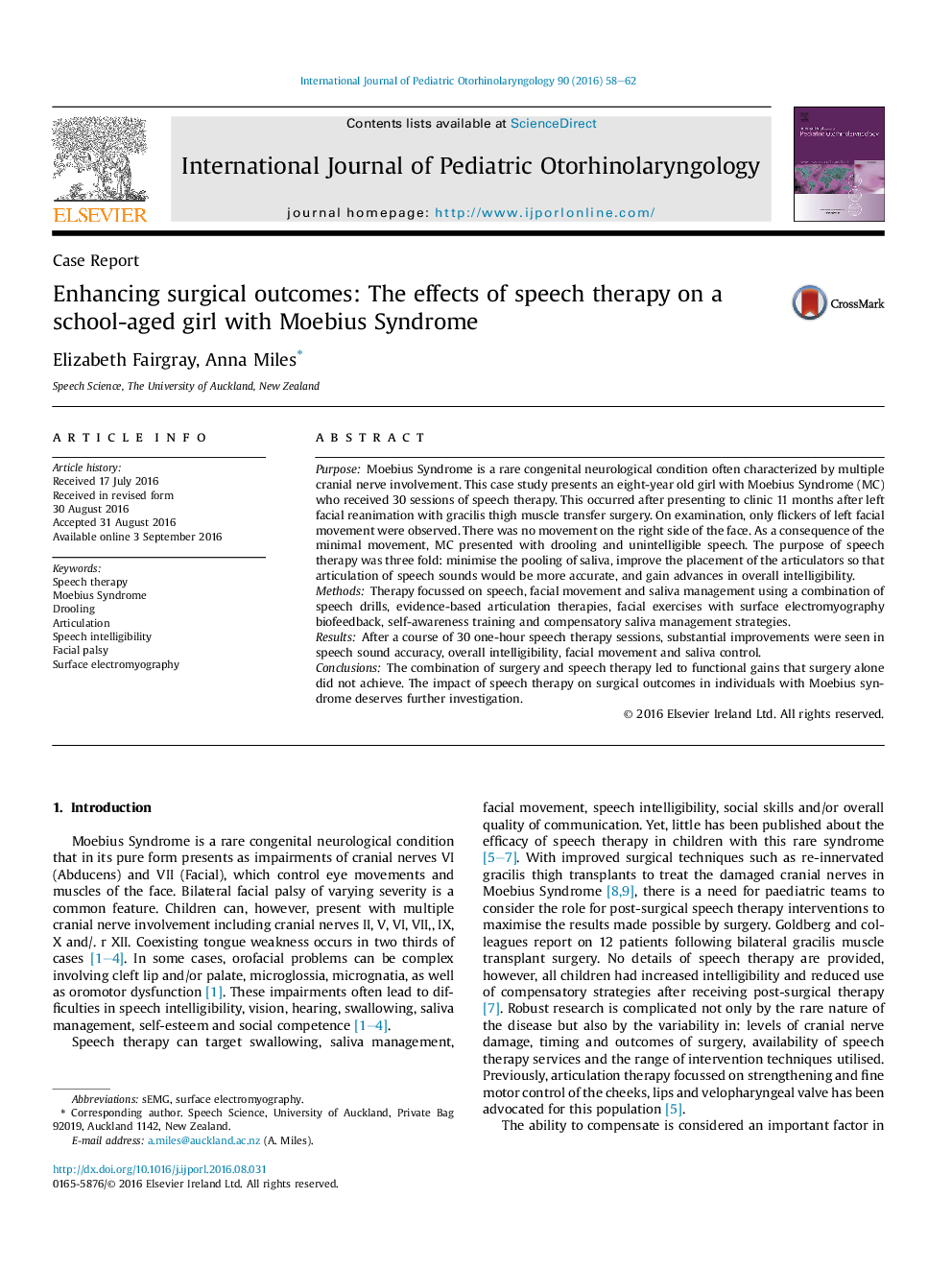| Article ID | Journal | Published Year | Pages | File Type |
|---|---|---|---|---|
| 6213045 | International Journal of Pediatric Otorhinolaryngology | 2016 | 5 Pages |
PurposeMoebius Syndrome is a rare congenital neurological condition often characterized by multiple cranial nerve involvement. This case study presents an eight-year old girl with Moebius Syndrome (MC) who received 30 sessions of speech therapy. This occurred after presenting to clinic 11 months after left facial reanimation with gracilis thigh muscle transfer surgery. On examination, only flickers of left facial movement were observed. There was no movement on the right side of the face. As a consequence of the minimal movement, MC presented with drooling and unintelligible speech. The purpose of speech therapy was three fold: minimise the pooling of saliva, improve the placement of the articulators so that articulation of speech sounds would be more accurate, and gain advances in overall intelligibility.MethodsTherapy focussed on speech, facial movement and saliva management using a combination of speech drills, evidence-based articulation therapies, facial exercises with surface electromyography biofeedback, self-awareness training and compensatory saliva management strategies.ResultsAfter a course of 30 one-hour speech therapy sessions, substantial improvements were seen in speech sound accuracy, overall intelligibility, facial movement and saliva control.ConclusionsThe combination of surgery and speech therapy led to functional gains that surgery alone did not achieve. The impact of speech therapy on surgical outcomes in individuals with Moebius syndrome deserves further investigation.
